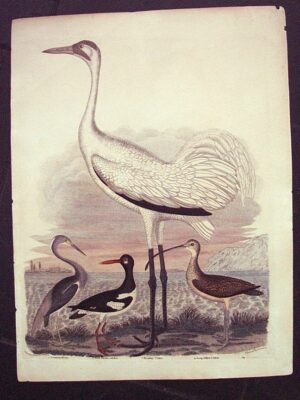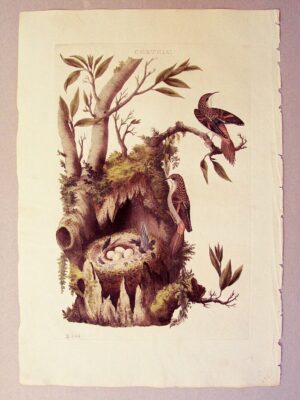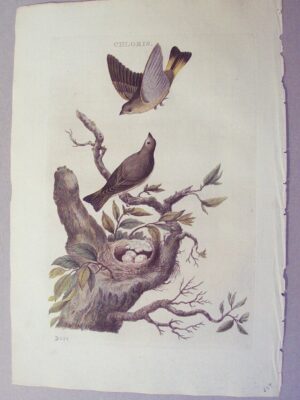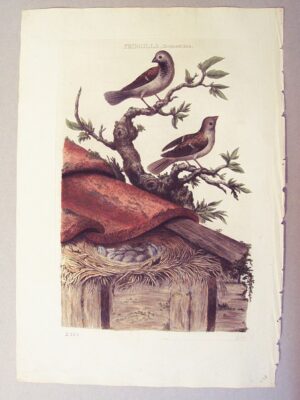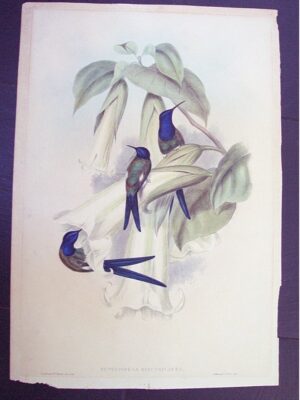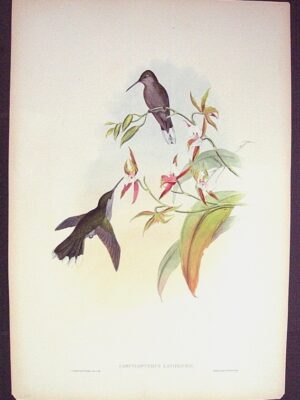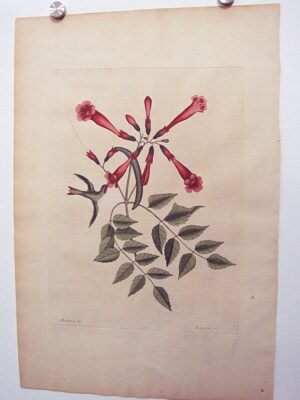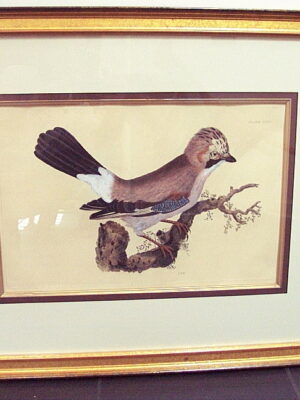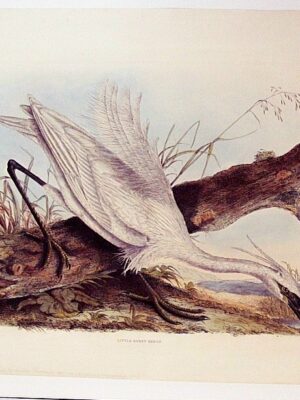In this area I offer some small and medium folios by a variety of bird artists of the 18th and 19th century. Generally these prints are hand-colored etchings from important natural history works.
Bird Folios
Artists of the 18th and 19th Century
Alexander Wilson: American Ornithology
These Wilson folio prints are from the 1828-1829 edition. This edition differs in several respects from the first edition, notably in the higher quality of materials, a tendency to slightly larger margins (prints were bound in atlas volumes), and in a lack of text offsetting on the plates. These prints are in very good to excellent condition.
-
PL 64 Louisiana Heron
$500.00
Cornelius Nozeman: Nederlandsche Vogelen
(Dutch Birds)
Published in Amsterdam in five volumes over a period of almost sixty years, Nederlandsche Vogelen depicts most of the bird species known in the Netherlands through the time of publication. The ambitious project was initiated by Dutch Remonstrant minister and ornithologist, Cornelius Nozeman. Nozeman partnered with the Sepps, a father and son with expertise in natural science, illustration, printing, publication and bookselling. They planned a five-volume work including illustrations and descriptive text, each volume to include fifty hand-colored engraved plates, each portraying a single bird species (life-sized if possible).
Nozeman wrote the text for Vol. 1 and much of the text for Vol. 2 before his death in 1786, while the elder Sepps, Christiaan (who died in 1775) and his son Jan Christiaan, were responsible for the drawings and engravings. Following the deaths of Christiaan Sepp and Nozeman, the Sepp family persevered with publication, enlisting the assistance of physician Martinus Houttuyn and later C. J. Temminck. After Jan Christiaan’s own death in 1811, his son Jan Sepp continued work on the fifth volume until completion in 1829.
-
Certhia
$500.00 -
Chloris
$350.00 -
Fringilla, Domestica
$650.00
John Gould: Monograph of the Trochilidae
We have two hummingbird plates from John Gould’s famous Monograph of the Trochilidae, or Family of Hummingbirds. These hand-colored lithographs have brilliant color. The paper is generally clean with some edge toning and edge wear. (Toning is exaggerated in the photos by shadows. Ask for additional photos if you wish.) The prints measure around 20-22 inches by 14-15 inches.
Gould issued this series in 25 parts from 1849-1861 with the help of H. C. Richter and William Hart. He began issuing a supplement in 1880 (completed by Richard Bowdler Sharpe in 1887, six years after Gould’s death). Including the 58 plates of the supplement, the total number of images in this work are 418. Our prints are all from the original issue, not from the Supplement. The plate numbers given are not recorded on the prints themselves, but reflect the order of issue as determined by Gould’s copy of the set.
-
#42 Eupetomena Hirundinacea
$1,500.00 -
#48 Campylopterus Latipennis
$500.00
Mark Catesby: The Natural History of Carolina, Florida and the Bahama Islands (1754)
Mark Catesby, a self-taught naturalist and artist, was the first to publish observations and artistic sketches on American flora and fauna. Originally issued between 1731 and 1743, Catesby’s Natural History of Carolina, Florida and the Bahama Islands was based on Catesby’s field research conducted during an extended visit to the New World in the 1720s. Something of a Renaissance man and lacking funds, Catesby took on virtually all roles in the production of his work including preparation of the text, producing the original paintings, preparing the etchings, and supervising the hand-coloring of the printed plates. The complete work included over 200 plates, and covered birds, animals, insects and plants.
Catesby’s friend, George Edwards (also an important artist/naturalist) supervised the coloring of the second edition, issued in 1754, five years after Catesby’s death. About 300 copies of both the first and second editions were produced using folio-sized laid paper. Few prints survive today in very good condition; thus we are pleased to present a beautiful hand-colored etching from the second edition, the Ruby-throated Hummingbird with Trumpet Vine.
-
Ruby-throated Hummingbird
$1,800.00
Prideaux John Selby: Illustrations of British Ornithology
Considered one of the great masters of bird art of the nineteenth century, P. J. Selby drew most of the birds in this series and did most of the etching himself. W. H. Lizars (who also served as Audubon’s first printer) did the printing and supervised the coloring. This series was first issued by subscription in nineteen parts from 1824-1834 on J Whatman paper. It was issued again in the 1840s and in the 1860s by Henry Bohn, also on J Whatman paper.
-
PL 36 Jay – Framed
Original price was: $300.00.$225.00Current price is: $225.00. -
PL 5 Little Egret Heron
Original price was: $3,500.00.$2,750.00Current price is: $2,750.00.


